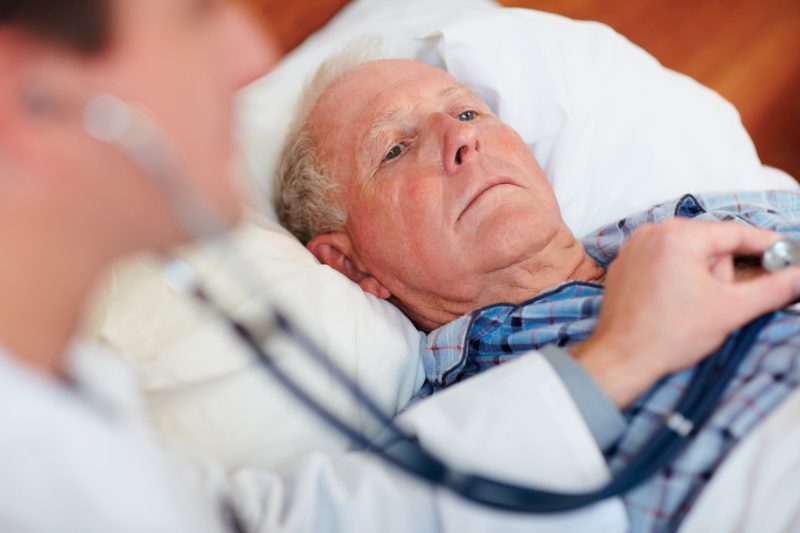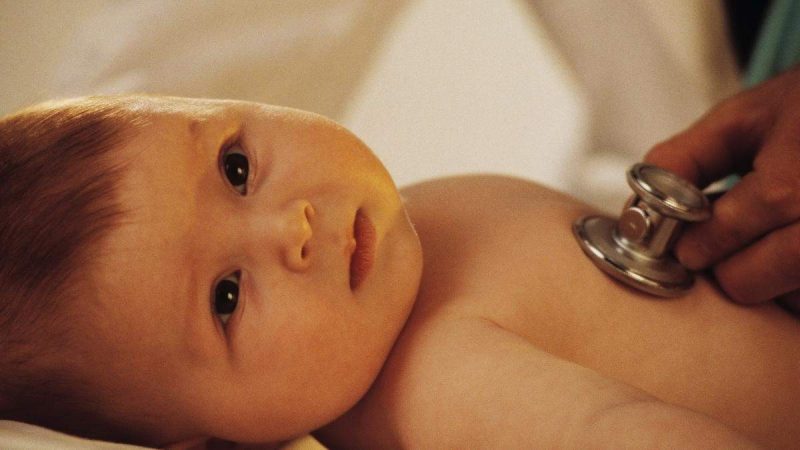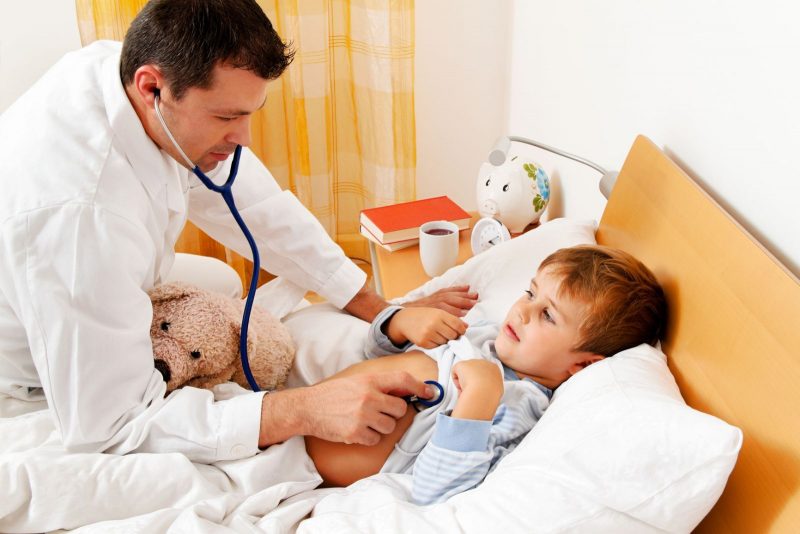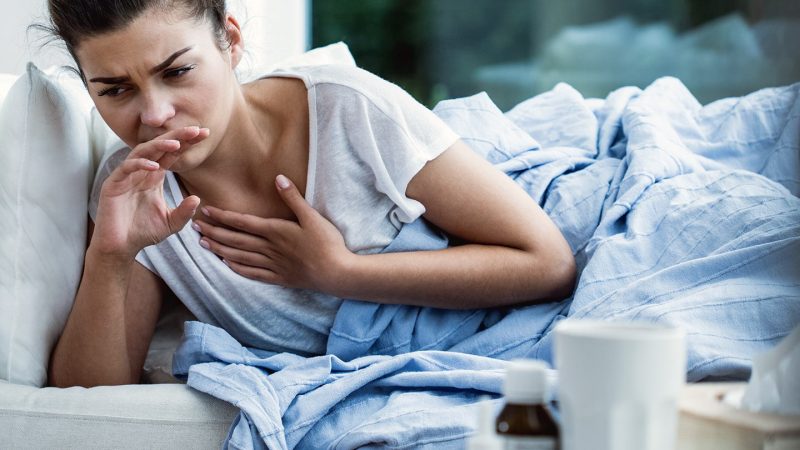Croupous pneumonia is a disease primarily of adults. A characteristic feature is the defeat of the lobe of the lung, which is why it is often called lobar pneumonia.
Material Content:
Symptoms and signs of croupous pneumonia
As a rule, the disease begins suddenly and abruptly.
A completely healthy person before that suddenly begins to complain of such unpleasant symptoms:
- a sharp increase in temperature to a mark of 39 degrees;
- chills;
- body discomfort;
- stitching chest pains;
- dry cough;
- shortness of breath (breathing quickens to 30-40 breaths per minute);
- insomnia
- decreased appetite.
Gradually, a dry cough turns into a productive one. Sputum has a specific “rusty” hue.
When listening to the lungs, an experienced doctor will immediately pay attention to specific signs:
- hard breathing;
- wet and dry rales;
- mild crepitus.
Inflammation of the lungs also affects the cardiovascular system. The doctor will immediately notice a weak, arrhythmic, but frequent (up to 120 beats per minute) pulse, dull heart sounds, low blood pressure.
Stages of development and pathogens
The pathogenesis of the disease is still controversial. But it is believed that pneumococci of various types cause inflammation.
There are 4 stages of croupous pneumonia:
- The tide. Pneumococcal infection begins to act actively. A characteristic feature is congestion in small blood vessels - capillaries, as well as swelling of the lung tissue. The duration of this period is from 12 to 72 hours.
- Red guardianship.This period bears such a name due to the fact that the lungs in appearance and density become similar to the liver. Particles of blood exit through the capillaries, as a result of which the so-called effusion appears in the alveoli. An infiltrate is formed - a seal. Because of this, gas exchange and the normal flow of air into the alveoli are disrupted. This stage lasts from 24 to 72 hours.
- Gray guardianship. At this stage, red blood cells do not exit through the walls of the capillaries. The affected lung is gray-green due to the high white blood cell count. This stage can last 3-6 days.
- Destruction. Fibrin in exudate dissolves and liquefies. The last period is usually the longest.
Timely treatment allows you to interrupt a rapidly developing pathological process and kill pneumococci, as a result of which it will not reach the last stages. Failure to take action could result in life-threatening complications.
Classical inflammation is cyclical in nature. But nowadays, thanks to modern methods of treatment, it is possible to shorten all cycles and quickly recover.
Atypical forms of the disease are also common. Pneumonia in children is especially dangerous, since in the vast majority of cases it is atypical and can even be accompanied by pain in the abdominal cavity, which is why doctors mistakenly suspect appendicitis and lose valuable time.
There is also the so-called Frindler pneumonia. It is very common in men in old age. Provoking factors - diabetes, malnutrition, alcoholism, chronic bronchitis. Mortality is high.
Diagnosis and treatment to the doctor
It is definitely not worth delaying a visit to the doctor, since the disease is serious.
Diagnosis is carried out in several stages:
- examination of the patient, listening and palpation of the chest;
- blood tests, urine, sputum;
- electrocardiography;
- X-ray
Sputum samples are often sent for bacteriological culture to determine the sensitivity of pathogenic microorganisms (Streptococcus pneumoniae) to antibiotics and immediately prescribe effective treatment.
Sometimes patients are advised to have a pleural puncture or undergo an examination of the function of external respiration. In rare and confusing cases, a multi-coiled CT scan may be prescribed.
Treatment of pneumonia
As a rule, such patients are always sent to a hospital. In severe cases of the disease, patients are transferred to intensive care units or to intensive care unit.
Drugs and antibiotics
The treatment of croupous pneumonia is complex. Most often, 2 antibiotics are prescribed immediately, while one is administered intramuscularly, the second intravenously. Strongly expressed intoxication is removed by plasmapheresis. To improve drainage function, expectorant drugs are prescribed, they are often used for administration through a nebulizer, directly to the diseased organ.
Physiotherapeutic procedures are also widely used:
- aerosol inhalation using ultrasound;
- decimeter wave treatment;
- pulsed UHF therapy;
- massage of the bronchi and lungs;
- physiotherapy;
- specially designed breathing exercises.
Mandatory bed rest and complete rest. Nutrition should be gentle, but balanced, with a sufficient number of useful elements. The drink is plentiful and warm.
Folk remedies for croupous pneumonia
Use folk methods carefully.
Most recipes are based on the medicinal effects of plants:
- Oat broth. On a small fire in 1 liter of water, boil 2 tbsp. l oats and raisins. The volume of fluid should be halved. The broth must be cooled, filtered and sweetened with honey. Drink 1 tbsp. l 4 times a day.
- Infusion of herbs. Stir in equal parts dry herbs of oregano, raspberry, coltsfoot. On 1 tbsp. l ready mixture take 200 ml of boiling water. Insist ¾ hours. Drink daily in small portions.
- Rosehip. A few berries of this plant insist in a glass of boiling water. Drink instead of regular tea. This drink perfectly enhances immunity.
- Garlic. From this method of treatment there will definitely be no harm. You need to make holes in a plastic cup and put several cloves of chopped garlic inside. Vapors should be inhaled with the nose or mouth at any free time.
For warming, people often use compresses based on alcohol, honey and aloe juice. The resulting mixture is wrapped in several layers of thin tissue and applied to the chest at night, bypassing the region of the heart. Boiled hot potato compresses are also very common.
Possible complications
Complications are rare, since adequate treatment helps to prevent their development. But in the case of delay and untimely treatment to the doctor, dangerous diseases such as sepsis, purulent pleurisy, abscess and other conditions, including infectious toxic shock, can occur.
Preventive measures
One effective measure is vaccination. Most often, children are vaccinated, and adults - at will or if indicated.
In cold weather, hypothermia should be avoided. In an apartment or house, it is necessary to ensure optimal conditions, regularly ventilate the premises. Long walks in the fresh air give a good effect.
Do not take lightly on the manifestations of SARS or the common cold. Pneumonia itself may be hidden under their symptoms, so it’s better not to waste time or immediately consult a doctor for an accurate diagnosis.
But if a specialist has made such a serious diagnosis, do not panic. Timely treatment guarantees a favorable outcome and the absence of complications.



















